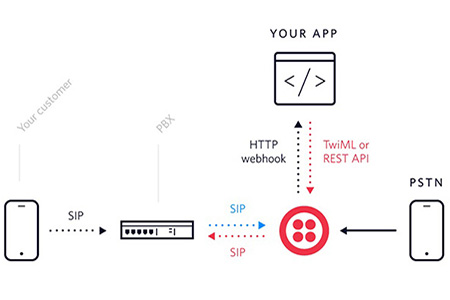
SIP (Session Initiation Protocol) is an IP telephony signaling protocol used for Voice over Internet Protocol (VoIP) communications. It can establish a real-time "session" between 2 or more participants, allowing users to conduct voice and video call. The following article will introduce you to SIP, I hope it will be helpful to you.

Why use SIP?
1. SIPS is responsible for connecting, monitoring and disconnecting VoIP sessions. It allows people around the world to communicate using their computers and mobile devices over the Internet; it is an important part of Internet Telephony, allowing us to take advantage of VoIP (Voice over IP) and have a rich communication experience.
2. SIP can realize instant communication and establish real-time sessions, such as online games, telephone conferences and video conferences. All of this is transmitted over a network connected by IP address and IP protocol.
3. Using SIP can reduce communication costs. Calls (voice or video) between SIP users are free worldwide.
4. SIP can also be used for asynchronous event notification, such as automatic callbacks, message waiting, etc.
How does SIP work?
SIP is an application layer protocol, very similar to text-based application layer protocols such as HTTP. It does not provide communication services itself; it is implemented in the Open Systems Interconnection (OSI) Works in the application layer of the communication model.
SIP is a request-response protocol that receives requests from the client and responses from the server. Requests can be sent over any transport protocol, such as UDP, SCTP or TCP.

#SIP determines the end system to be used for the session, the communication medium and media parameters, and whether the called party agrees to participate in the communication. Once these are ensured, SIP establishes the call parameters at either end of the communication and also handles call transfer and termination.
Function of SIP
The SIP communication protocol determines five attributes when establishing and terminating multimedia sessions:
1, User location
SIP determines the user location through the registration process. When the softphone is activated on the laptop, it sends a registration to the SIP server announcing the availability of the communication network. It's also possible to register Voice over IP (VoIP) phones, cellular phones and even complete teleconferencing systems. Depending on the registration point selected, several different locations may be registered simultaneously.
2. User availability
User availability is simply a method of determining whether the user is willing to answer communication requests. If you "call" and no one answers, SIP determines that the user is unavailable. Users can register for multiple locations but may only accept incoming communications from one device. If there is no answer, it will transfer to another device, or the call will be forwarded to another application, such as voicemail.
3. User capabilities
Using all the various multimedia communication methods and standards, it is necessary to check the compatibility between communication and user capabilities. For example, if a user has an IP phone on their desktop, whiteboard conferencing via that device will not work. This feature also determines which encryption/decryption methods the user can support.
4. Session settings
SIP establishes session parameters for both ends of the communication, more specifically, one person calls and the other person answers. SIP provides the means to establish and/or establish communications.
5. Session Management
SIP is used to transfer calls in the middle of a session, terminate calls and change call parameters (such as adding a three-party conference).
With SIP session management, users can also change the session by making a conference call, changing the phone call to a video conference or opening an in-house developed application.
The above is the entire content of this article, I hope it will be helpful to everyone's study. For more exciting content, you can pay attention to the relevant tutorial columns of the PHP Chinese website! ! !
The above is the detailed content of What is SIP. For more information, please follow other related articles on the PHP Chinese website!